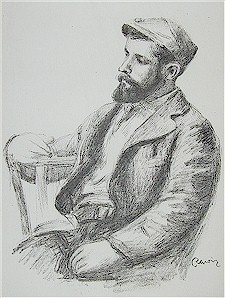| Louis Valtat | |
|---|---|
 |
|
| Born | August 8, 1869, Dieppe, Seine-Maritime |
| Died | 1952 |
| Nationality | French |
| Field | Fauvism |
| Work | View Complete Works |
Louis Valtat was among the most significant members of the Fauvism movement, which originated in France in the early 20th century. He played a substantial part in founding the group, which focused on the use of strong, almost wild coloring, rather the more delicate touches that had characterized the Impressionist tendency from which it had sprung.
Personal Life
Valtat was born in the port city of Dieppe in Normandy, but he went to school near Versailles. His father, a dedicated painter himself, encouraged the young Louis to take an interest in art. The boy was accepted to the prestigious Ecole des Beaux Artes in Paris. As an adult, Valtat suffered from tuberculosis, so divided his time between summers in Paris and winters along the Mediterranean coast. His time spent recuperating there encouraged him to experiment with color and form.
Famous Works
Valtat’s paintings began to be noticed by art critics while he was still in his twenties, with Sur Le Boulevard in 1893 being among the first to gain significant attention. However, it was after the turn of the 20th century that he produced his most famous paintings. These included Les Rochers Rouges dans la Mer in 1903 and, three years later, La Dentelliere. These works saw Valtat established as one of the unofficial leader of the Fauvism movemment, albeit with less lasting fame than his colleague, Henri Matisse.
Artistic style
Valtat’s early works were influenced by the landscape paintings of his father, and His full maturity as a painter arrived when he, together with two contemporaries – including Matisse – exhibited his paintings to considerable acclaim at the Salon d’Automne in Paris in 1905. From then on, Valtat’s paintings showed a blend of the vivid, almost strident colors of pure Fauvism and the slightly gentler, less abstract touches that Valtat had retained from his early experiences with Impressionism.